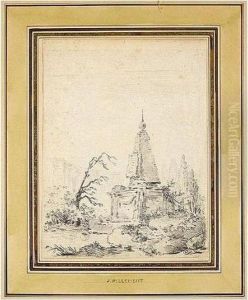Henri Roland L. Turpin De Crisse Paintings
Henri Roland L. Turpin de Crissé was a French painter and art collector born on February 9, 1782, in Paris, France. He was part of the early 19th-century Neoclassical movement, which was characterized by its interest in classical antiquity and an emphasis on simplicity, straight lines, and a sense of formality.
Turpin de Crissé was the son of a general and received a fine education. He developed an interest in art at an early age and went on to study with prominent artists of the time, including Jacques-Louis David, who was the leading French painter in the neoclassical style. Under David's tutelage, Turpin de Crissé honed his skills and developed a keen eye for the classical principles of beauty, harmony, and restraint.
Throughout his career, Turpin de Crissé painted historical and mythological scenes, landscapes, and portraits. He was particularly interested in architectural subjects, and many of his works depict ancient ruins and classical buildings, reflecting his fascination with the ancient world. His works are known for their clarity of form, serene composition, and the use of light to enhance the sense of three-dimensionality.
Turpin de Crissé exhibited his works at the Paris Salon, the official art exhibition of the Académie des Beaux-Arts in Paris. His paintings were well received, and he gained a reputation as a skilled artist. In addition to his painting career, Turpin de Crissé was an avid art collector, amassing a significant collection of artworks, including drawings and prints, during his lifetime.
Despite his contributions to French art, Turpin de Crissé's work is not as widely known as that of some of his contemporaries. However, his paintings can be found in various museums and private collections, where they continue to be appreciated for their neoclassical elegance and historical value.
Henri Roland L. Turpin de Crissé passed away on May 13, 1859, in Vernou-sur-Brenne, France. His legacy as a painter and collector remains a small but noteworthy chapter in the history of French art during the neoclassical period.
